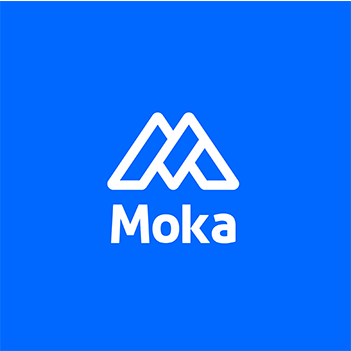How to Develop Career Paths and Frameworks for Employees in 2025

Career pathing in organizations has become essential in 2025 as businesses face challenges like skill gaps, retention issues, and evolving workforce expectations. Employees increasingly demand clear growth opportunities, while generational differences and mental health concerns add complexity to retention strategies. A structured career progression framework provides clarity and purpose, helping employees feel secure and valued. This approach not only reduces turnover but also boosts engagement and productivity. By aligning career development with future trends, you can create a workplace that thrives in an ever-changing environment.
Key Takeaways
Career paths show workers clear ways to grow, boosting motivation.
A clear career plan matches personal goals with company needs.
Regular talks and feedback help improve career plans for workers.
Flexible plans let workers grow in ways that fit their goals.
Using tech can improve career paths with smart tools and tips.
Understanding Career Pathing and Frameworks

What Are Career Paths?
Career paths represent the routes employees can take to advance within an organization. These paths outline potential roles and responsibilities employees can aim for as they grow professionally. Career pathing focuses on aligning your personal goals with the needs of the organization. It provides clarity on how you can progress, whether through promotions, lateral moves, or skill-building opportunities. By understanding career paths, you can better navigate your journey and achieve long-term success.
What Is a Career Progression Framework?
A career progression framework is a structured system that defines how employees can advance in their careers. It includes clear guidelines on required skills, development opportunities, and evaluation criteria. Unlike traditional career path planning, which often lacks alignment with organizational goals, a career progression framework ensures that your growth aligns with the company’s objectives. This framework also highlights the steps you need to take to achieve your career development goals. For example, it may outline training programs, mentorship opportunities, or cross-functional roles to help you succeed.
Key Differences Between Career Pathing and Frameworks
Career pathing and career frameworks serve different purposes. Career pathing focuses on specific routes within an organization, helping you align your career goals with the company’s needs. It emphasizes structured, organization-centric growth. On the other hand, career frameworks offer a broader perspective. They allow you to explore career development options across industries or organizations. While career pathing is more detailed and role-specific, frameworks provide flexibility for personal interests and long-term planning.
Career progression frameworks also differ from traditional career planning methods. Frameworks provide a clear outline of career paths, required skills, and evaluation criteria. Traditional methods often lack this level of detail and may not align with organizational goals. By adopting a framework, you gain a roadmap that supports both your aspirations and the company’s success.
Why Career Pathing in Organizations Matters in 2025
Career pathing plays a vital role in shaping the future of work in 2025. As organizations face rapid changes, you must adapt to evolving workforce needs. Employees now expect clear career paths that align with their personal goals and professional aspirations. Without these, retaining top talent becomes increasingly difficult.
Career pathing in organizations addresses several critical challenges. It reduces turnover by providing employees with clear trajectories for growth. Research shows that 94% of employees would stay longer at a company that invests in their career. When you offer structured career progression, employees feel valued and motivated to contribute more effectively.
In today’s gig economy, adaptability is key. Career pathing prepares employees to shift between roles and acquire new skills quickly. This flexibility ensures your workforce remains competitive and ready to tackle future challenges. A career progression framework supports this adaptability by offering targeted training and development programs. These programs bridge skill gaps while fostering individual growth.
The benefits of career pathing extend beyond retention. It also boosts productivity and performance. Employees with clear goals deliver better results, leading to higher profitability for your organization. The table below highlights some of the key advantages:
Benefit | Explanation |
|---|---|
Better service or product quality leads to increased profitability. | |
Reduced Turnover | Clear career trajectories decrease the likelihood of employees seeking other opportunities. |
Bridging Skill Gaps | Targeted training and development programs cater to individual growth and address skill gaps. |
By implementing career pathing, you not only enhance employee satisfaction but also future-proof your organization. A well-designed career progression framework aligns individual aspirations with business goals, creating a win-win scenario. Start planning today to ensure your workforce thrives in 2025 and beyond.
Benefits of Career Pathing and Frameworks
For Employees
Increased Engagement and Motivation
Career pathing enhances your engagement and motivation by giving you a clear sense of direction. Personalized growth plans tailored to your strengths and goals make you feel valued. When you know the steps to advance, you gain clarity and confidence in your future. This reduces uncertainty and helps you focus on your current role. Career pathing also provides meaning and purpose, which fosters loyalty and boosts employee engagement. You feel more motivated to invest effort in your work, knowing it contributes to your professional growth.
Clearer Growth Opportunities
Career pathing offers structured frameworks that outline specific routes for your career growth. These frameworks help you see potential roles you can aspire to over time. They also align your development with the company’s future needs. By understanding the steps required for advancement, you can plan your career progression effectively. This clarity ensures you grow alongside the organization. Training and development opportunities further support your journey, making career pathing a vital tool for employee career progression.
Enhanced Skill Development
Career pathing focuses on equipping you with the skills needed for future roles. It emphasizes learning and development through targeted training programs. These programs help you bridge skill gaps and prepare for higher-level positions. Mentorship and coaching opportunities also play a key role in your professional development. By continuously building your competencies, you stay competitive and ready for new challenges. This approach ensures your career growth aligns with both personal and organizational goals.
For Organizations
Improved Retention Rates
Career pathing in organizations directly impacts employee retention. Employees are more likely to stay when they see clear career tracks and opportunities for advancement. Structured career progression plans reduce turnover by showing employees that their growth matters. This strategy not only retains valuable talent but also minimizes the costs associated with hiring and training new employees.
Higher Productivity and Performance
A career progression framework boosts organizational productivity by aligning individual goals with business objectives. Structured pathways help employees develop skills that enhance their performance. Clear communication between employees and management fosters engagement and clarity. Employees with defined career paths deliver better results, contributing to the company’s success. Career mapping also supports succession planning by preparing future leaders for key roles.
Stronger Employer Branding
Organizations that prioritize career pathing build a reputation as great places to work. Employees value companies that invest in their professional growth. A strong career framework demonstrates your commitment to employee development. This enhances your employer branding, attracting top talent and positioning your organization as an industry leader. By fostering a culture of growth, you create a workplace where employees thrive.
Step-by-Step Guide to Developing Career Paths and Frameworks
Assess Organizational Needs
Identify Current and Future Skill Gaps
To start career pathing, you need to assess your organization’s current and future needs. Follow these steps to identify skill gaps:
Understand your current workforce dynamics. Analyze employee roles and their existing skills.
Conduct a skills gap analysis. Use surveys, meetings, or performance reviews to identify missing skills.
Predict future trends. Look at industry changes to determine critical skills and roles your organization will need.
Review employee potential. Identify high-potential individuals who can fill future roles.
This process ensures your career pathing aligns with both present and future organizational goals.
Align Career Development Plans with Business Goals
A career development plan must align with your company’s objectives. To achieve this:
Set goals around the skills and competencies needed for career advancement opportunities.
Identify training programs or experiences that close development gaps.
Track progress during regular check-ins with employees.
Tailor plans to individual growth needs.
You can also use strategies like mentorship programs, job shadowing, and stretch projects to help employees grow while meeting business needs.
Define Roles and Competencies
Create Clear Job Descriptions
Clear job descriptions are essential for career path planning. Conduct a thorough job analysis to define key responsibilities and required skills. Involve employees from diverse backgrounds to ensure the descriptions reflect real-world expectations. Communicate these descriptions clearly to foster transparency and engagement.
Map Required Skills and Competencies
Mapping skills and competencies helps you build a strong career framework. Start by assessing your workforce’s current capabilities. Compare these skills to the requirements of each role. Use tools like skills assessments to identify gaps. Develop a comprehensive skills framework that aligns with your organization’s goals. Regularly update this framework to keep it relevant.
Map Career Progression Paths
Establish Lateral and Vertical Growth Opportunities
Career pathing in organizations should include both lateral and vertical growth opportunities. Define clear objectives for each type of movement. Encourage employees to seek feedback and mentorship to identify areas for improvement. Offer learning opportunities like workshops or secondments to help employees explore new roles.
Incorporate Cross-Functional Roles
Cross-functional roles enhance career growth by exposing employees to different areas of the business. Introduce temporary assignments or collaborative projects that allow employees to work across departments. This approach builds versatile skills and prepares employees for future leadership roles.
Implement Training and Development Programs
Offer Upskilling and Reskilling Opportunities
Training and development play a crucial role in career pathing. You can empower employees by offering upskilling and reskilling opportunities tailored to their career paths. Start by assessing their skills against defined job profiles. This helps you identify gaps and recommend personalized training programs. Encourage employees to create career plans that align with their learning preferences.
To make these programs effective, integrate learning initiatives into daily work life. For example, you can offer workshops, online courses, or certifications that focus on both technical and soft skills. Treat career pathing as an ongoing process by regularly updating training programs to match evolving business needs. This ensures employees remain competitive and ready for future roles.
Leverage Mentorship and Coaching
Mentorship and coaching are powerful strategies for employee development. Pair junior employees with experienced mentors who can guide them through their career progression. Mentors provide valuable insights, helping employees navigate challenges and identify growth opportunities. Coaching sessions can also focus on specific skills or competencies needed for advancement.
Make career development a key responsibility for managers. Encourage them to support their team members’ growth by offering constructive feedback and identifying relevant training opportunities. This approach fosters a culture of continuous learning and development, ensuring employees feel supported throughout their career path planning journey.
Monitor and Refine the Framework
Gather Employee Feedback
Regular feedback is essential for refining your career progression framework. Use structured interviews to understand employees’ short-term and long-term career goals. Conduct skills assessments to identify their current competencies and areas for improvement. Facilitate two-way communication channels, such as surveys or focus groups, to gather insights on the effectiveness of career pathing initiatives.
Performance monitoring also plays a key role. Track metrics like engagement and retention to evaluate how well the framework supports employee career progression. This data helps you identify areas for improvement and ensures the framework remains relevant.
Adjust Frameworks Based on Workforce Trends
Adapting to workforce trends is critical for maintaining an effective career progression framework. Tailor the framework to reflect your organization’s unique culture and values. Align it with current and future business objectives to ensure it supports overall goals.
Incorporate flexibility into the framework to address changes in the job market or organizational structure. For example, you can design career paths that include cross-functional roles or remote work options. Promote equitable opportunities by ensuring all employees have access to the resources they need for growth. Leverage HR technology tools to manage the framework efficiently and make data-driven adjustments.
By continuously monitoring and refining your framework, you can create a dynamic system that supports both employee development and organizational success.
Best Practices for Career Pathing in Organizations
Ensure Transparency and Communication
Transparency and communication are essential for effective career pathing. You need to establish clear structures that outline how employees can grow within the organization. Open dialogue between employees and leaders creates an environment where everyone feels valued. Regular conversations about career goals help employees understand their opportunities and responsibilities.
Ongoing interactions also play a key role. When you maintain consistent communication, employees feel empowered to take ownership of their development. This approach enhances engagement and performance. By fostering transparency, you build trust and ensure employees stay motivated to follow their career paths.
Build Flexibility into Frameworks
Flexibility in career frameworks allows you to meet the diverse needs of your workforce. Consider these strategies:
Hold regular discussions about career goals to align employee aspirations with organizational objectives.
Include non-traditional career paths that recognize transferable skills and unique trajectories.
When you adapt frameworks to individual needs, employees feel supported in their growth. This flexibility ensures your career pathing efforts remain inclusive and effective.
Leverage Technology and Data Analytics
Technology and data analytics transform career pathing by offering personalized solutions. AI tools can match employee skills with suitable roles, helping them find the best fit for their growth. These tools also provide insights into industry trends and skill gaps, enabling employees to prepare for future opportunities.
By integrating technology, you can create data-driven career plans that align with both employee goals and business needs. This approach ensures your organization stays competitive while empowering employees to succeed.
Foster a Culture of Continuous Learning
A culture of continuous learning strengthens your organization and supports career pathing efforts. It encourages employees to expand their knowledge, adapt to changes, and prepare for future roles. By fostering this culture, you create an environment where growth becomes a shared priority.
To build a learning culture, start by offering diverse opportunities for professional development. Employees benefit from workshops, certifications, and on-the-job training that deepen their expertise. These initiatives prepare them for greater responsibilities and ensure they remain competitive in their fields. When employees feel supported in their growth, they stay engaged and connected to your organization.
Encourage innovation by promoting curiosity and creativity. Provide employees with resources to explore new ideas and solve problems in unique ways. This approach not only enhances their decision-making skills but also drives innovation within your organization. A workforce that values learning contributes to a dynamic and forward-thinking company culture.
You can also align learning initiatives with career pathing frameworks. A strong learning culture makes career growth a natural outcome rather than an added benefit. Employees see that your organization values their development, which boosts job satisfaction and retention. When employees grow, your business benefits from improved performance and positive outcomes.
To keep pace with industry changes, integrate learning into daily workflows. Use technology to deliver personalized training plans and track progress. Encourage mentorship programs where employees can learn from experienced colleagues. These strategies ensure your workforce stays relevant and ready for future challenges.
By fostering continuous learning, you create a workplace where employees thrive. This culture strengthens your brand, promotes innovation, and ensures long-term success for both employees and your organization.
Real-World Examples of Career Pathing Success

Case Study 1: A Tech Company’s Approach to Career Mapping
A leading tech company revolutionized career pathing by aligning employee development with organizational goals. Their approach involved engaging employees in the career mapping process and consulting them to understand their aspirations. This collaboration helped establish clear career paths, enhancing job satisfaction and retention.
The company also personalized career development goals for each employee. They introduced tailored development programs to support skill enhancement and monitored progress to ensure alignment between personal and organizational objectives.
Here’s how they succeeded:
Aligned employee growth with business goals.
Engaged employees in career mapping discussions.
Created clear paths to boost satisfaction and retention.
Consulted employees to understand their aspirations.
Built personalized development plans.
Supported skill-building through targeted programs.
Monitored progress to maintain alignment.
This structured approach to career pathing empowered employees to grow while contributing to the company’s success.
Case Study 2: How a Retail Giant Improved Retention with Frameworks
A global retail giant used a competency framework to improve retention and engagement. By effectively communicating this framework through relatable stories, they increased employee engagement by 34%. Employees felt connected to the organization’s narrative, leading to a 20% rise in retention rates.
The framework also focused on enhancing customer interaction and problem-solving skills. This effort resulted in a significant improvement in their Net Promoter Score, which rose from 38 to 53 within a year. Employees became more engaged, and customer satisfaction soared. This case highlights how a well-implemented framework can drive both employee and business success.
Lessons Learned from Industry Leaders
Industry leaders have demonstrated that successful career pathing requires embedding growth into organizational culture. Here are key takeaways:
Foster a learning culture to enhance job satisfaction and outcomes.
Commit to continuous growth for both leaders and employees.
Additionally, cultivating a growth mindset helps employees view challenges as opportunities for learning. Embracing a learning culture ensures natural career progression and individual development. Effective communication between leaders and employees builds trust and strengthens career development efforts.
These lessons show that prioritizing career pathing benefits both employees and organizations, creating a foundation for long-term success.
Career paths and frameworks play a crucial role in driving both employee satisfaction and organizational success. They provide you with clear growth opportunities while aligning your development with business goals. In 2025, adaptability and innovation will become essential for designing frameworks that meet evolving workforce needs.
To create adaptable frameworks, focus on key factors:
Skill Development: Equip employees with competencies for higher-level roles.
Succession Planning: Prepare future leaders to ensure stability.
Organizational Growth: Align employee development with strategic objectives.
You can start small by following these steps:
Implement a competency-based talent framework.
Provide tools for self-assessment and career planning.
Communicate clearly, train employees, and measure success.
Leverage technology to scale your efforts effectively:
Method | Description |
|---|---|
Use analytics to track progress and predict skill needs. | |
Digital Roadmaps | Visualize career paths to guide employees. |
E-learning Platforms | Offer continuous learning opportunities for advancement. |
Feedback Mechanisms | Enable real-time feedback to refine career frameworks. |
By starting small, involving employees, and embracing technology, you can build a dynamic system that supports growth and ensures long-term success.
FAQ
What is the difference between career pathing and career frameworks?
Career pathing focuses on specific routes for growth within your organization. It aligns your goals with company needs. Career frameworks provide a broader structure, outlining skills and competencies for various roles. Frameworks offer flexibility, while pathing emphasizes detailed, role-specific progression.
How can technology improve career pathing?
Technology simplifies career pathing by offering tools like AI-driven skill assessments and digital roadmaps. These tools match your skills with suitable roles and provide personalized development plans. E-learning platforms also help you upskill efficiently, ensuring you stay competitive in your career.
Why is career pathing important for employee retention?
Career pathing shows employees clear growth opportunities. When you see a future within your organization, you feel valued and motivated to stay. Structured career paths reduce turnover by aligning your aspirations with company goals, creating a win-win situation for both parties.
How do you identify skill gaps in your workforce?
You can identify skill gaps by conducting surveys, performance reviews, or skills assessments. Compare current employee skills with the requirements of future roles. This analysis helps you design targeted training programs to bridge gaps and prepare your workforce for upcoming challenges.
What role does mentorship play in career development?
Mentorship provides guidance and support as you navigate your career. Mentors share valuable insights, helping you overcome challenges and identify growth opportunities. This relationship fosters skill development and builds confidence, ensuring you stay on track with your career goals.
See Also
Boost Employee Productivity With Effective Talent Management Tools
Strengthen Your Employer Brand With MokaHR's Solutions
Empower Your Business Growth With Effective ATS Recruitment
Improve Employee Experience Using MokaHR's Management System
From recruiting candidates to onboarding new team members, MokaHR gives your company everything you need to be great at hiring.
Subscribe for more information

